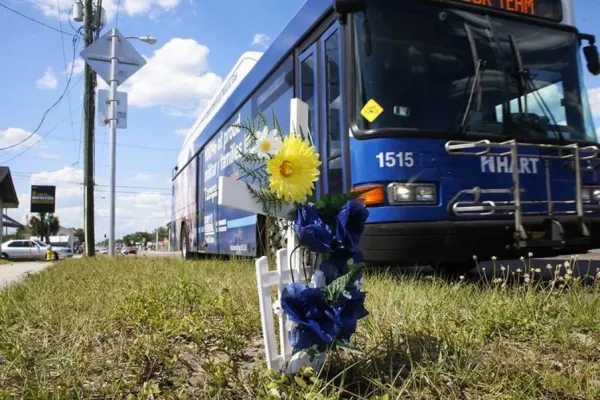The Transit Worker & Pedestrian Protection Act

Transit Worker Attacks
Every year, thousands of transit bus and rail workers are assaulted in the course of performing their duties. Many of these brutal attacks occur while massive buses are rolling down the street, placing pedestrians, bicyclists, and other motorists in grave danger. Passengers are tired of paying increased fares for less frequent service, so quite often they take out their frustrations on the drivers -- the neighborhood tax collectors. Other disputes occur when operators simply enforce safety regulations. Mental illness is also an issue in many cases. Some incidents happen for no reason at all, as juveniles act out on the bus just for laughs. There is no excuse for any of it. Weapons vary. Some drivers get punched or kicked. Others are stabbed or strangled from behind. Some offenders spit, or throw steaming hot coffee or urine in the face of the operator.
Blind Spots
Massive mirrors and left side pillars on transit buses make it impossible for bus drivers to see what they need to see to safely make it through crosswalks. These bus components create blind spots that obstruct the driver’s view. Bad bus engineering guarantees needless tragedies. Despite knowing the risks, transit systems from coast to coast continue to order these massive mobile manslaughter machines and put them on the road, and innocent people are being run over and killed as a result.
Ergonomics
Most bus operators who have been on the job for a while suffer from back, neck, knee, or shoulder injuries because they perform the same functions day after day in poorly engineered work stations. Drivers’ seats cause wear and tear on bus operators’ bodies. Other equipment is not ideally located, causing muscle strains that are often irreversible.
The Transit Worker and Pedestrian Protection Act
The Transit Worker and Pedestrian Protection Act requires transit agencies to develop Bus and Rail Operations Safety Risk Reduction Programs to improve safety by preventing assaults on transit workers, reducing the number of bus accidents due to blind spots, and making changes to the bus drivers’ workstation to reduce ergonomic injuries. The bill requires transit agencies to work with frontline workers and their unions to implement safety improvements, including:
- Assault mitigation infrastructure and technology, including barriers to prevent driver assaults.
- De-escalation training for bus drivers.
- Modified bus specifications and retrofits to reduce visibility impairments.
- Driver assistance technology that reduces accidents.
- Installation of bus driver seating to reduce ergonomic injuries.
